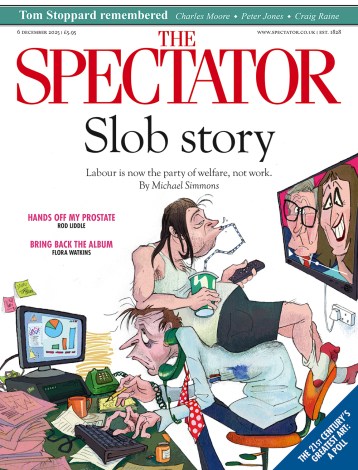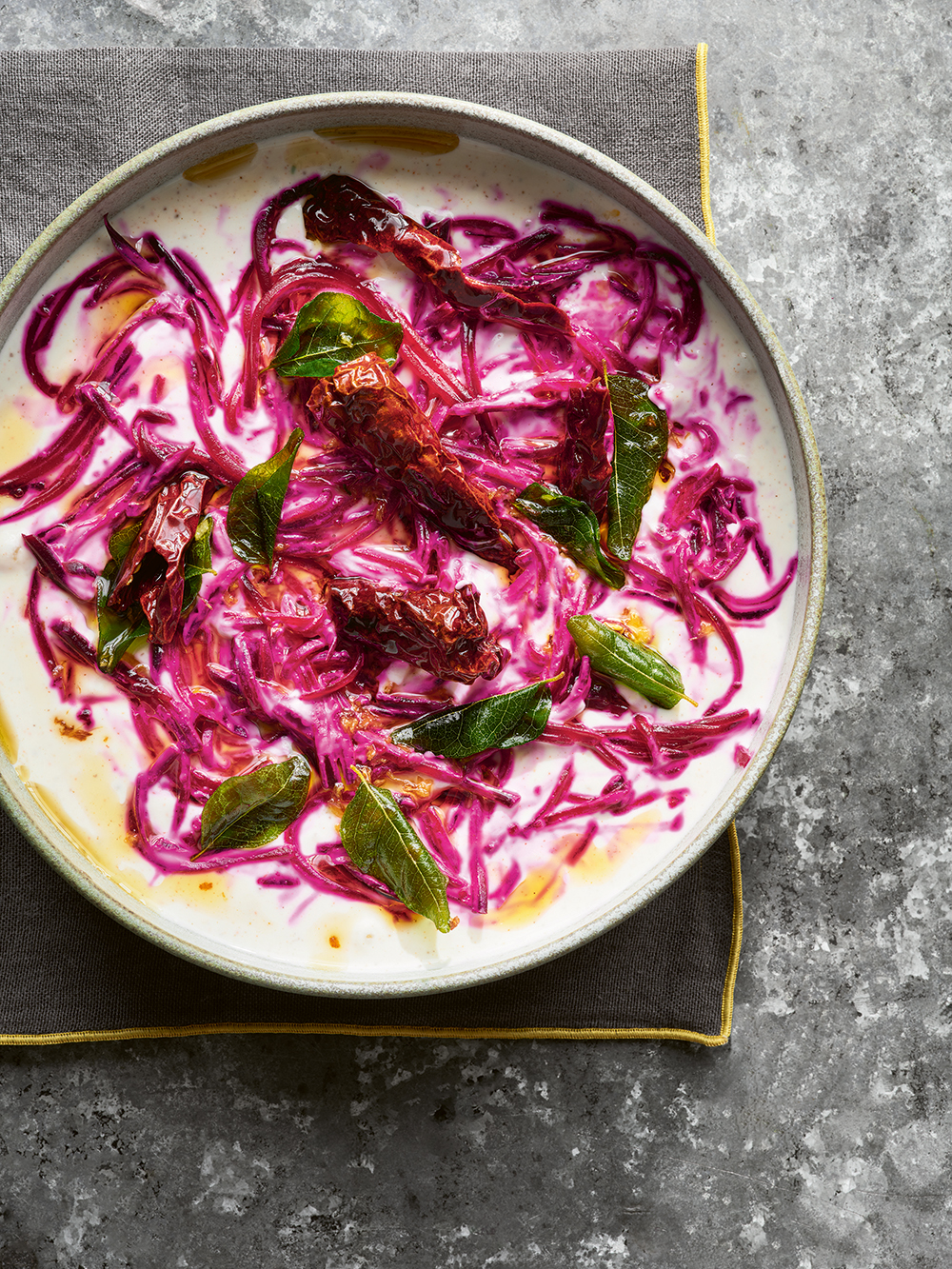
‘When people see the word “chef” on the cover of a cookbook, it can set off alarm bells. It’s intimidating, I get it,’ says Ben Lippett, a former chef. The statement does make one wonder. When does a cook become a chef or a chef become a cook? Recently I sulked, I don’t know why, when a friend introduced me as ‘a chef’. It is an estimable compliment, surely suggesting one is better than a good professional cook. But I have never put in all those hours.
With his book How I Cook (HarperCollins, £26), Lippett reminds me of the early Nigel Slater. He is a wonderful mentor to get you started if you seriously want to become a good home cook, but one who will not saddle you with an Instagrammer’s furbellows. This is simple food – ‘simple’ being actually one of the hardest acts to pull off when one is tempted to show off or mess with ingredient substitution. If someone asks me how I cook, I airily reply: ‘Fifty per cent good shopping, then let the food speak for itself.’
Lippett offers far more, detailing how to perfect the recipes we love: Udon noodles with ginger prawn bisque; sausage and sage parpardelle; homemade gnocchi; beer-batter frito misto; ‘a very good cheeseburger’; smoked aubergine and n’duja lasagne; and chocolate mousse (we all need to know how to make this). It is an excellent modern manual. Newcomer cooks, get it.
There is another good way to write a cookbook, not exercised enough. This is by ingredients – listing them, detailing their properties and giving the best recipes for each. It was the great Jane Grigson go-to format. Camellia Panjabi also does it beautifully in Vegetables: The Indian Way (Michael Joseph, £40). I love this book because I tend to cook fish on its own, grilled or baked, and then look for an inspired vegetable dish, often veering the South Asian way. Panjabi gives us finely chopped beans with shredded coconut, crispy sweetcorn kernels, okra in yoghurt sauce and a brilliantly pretty tomato chat.
Grigson’s best book was arguably Good Things and I do not think anyone has purloined that title well – until now. Samin Nosrat nicely calls her Good Things: Recipes to Share with People You Love (Ebury, £30) a treasure chest, a box of her ‘most useful and beloved everyday recipes’. Each section is explained by the recipes’ advantages. Good things come to those who wait: seasonal produce. Then there are good things to welcome others with: gestures of hospitality. There are good things to keep up your sleeve: store cupboard staple. And all good things come to an end: desserts. It’s clever, and the recipes are tempting: a pink-white marbled beetroot labne; shaved carrot salad; an overnight marinated ‘joojeh kabob’ roast chicken; and crab with Calabrian chilli butter. The ‘sky-high focaccia’ is a hurray moment – we need the big bubble kind.
The best way to research a cookbook round-up involves a visit to a good, family-run bookshop. I found Caper in Magdalen Road, Oxford. ‘What’s new?’ I asked the front man, Xander Cansell. The opinions of such people truly matter. They do the umming over what to bring into their small shelving space and often host events to get the crowds in. Xander led me to Helen Goh’s Baking & the Meaning of Life: How to Find Joy in 100 Recipes (Murdoch Books, £26). Never one to resist a bite at the ‘meaning of life’ lure, I now have her book and yes, she can fulfil her promise. Her own experiences – her family’s migrant journey from Malaysia and her search for belonging – colour her view of how to live. Her baking obsession is part of that. She knows none of us needs sweet pastries to survive, but we need pursuits such as baking, sport or gardening to give life meaning beyond survival. And her recipes are lovely. Try the caramelised cinnamon doughnut cake or the ‘Lao Gan Ma’ cheese biscuits. Both are amazingly good.
Caper’s shelves also introduced me to a series of eye-catching small books by Orla McAndrew. This year’s Larder (Blasta Books, £14.99) shows you how to make dinner in ten minutes (pasta puttanesca being the delicious obvious way), followed by many ideas with coconut milk and all sorts of uses for frozen pastry, an ingredient very close to my heart. These books are compact enough to stuff into Christmas stockings. Previous titles include Hot Fat, Wok and Cookies.
Sumptuous and elegant, Skye McAlpine’s The Christmas Companion: Recipes, Crafts and Inspiration for a Magical Festive Season (Bloomsbury, £28) surpasses most festive cookbooks. Sure, it has all the amazing cakes, puddings, biscuits and other treats the time-rich could make, plus tasteful decoration ideas; but it is the vegetable section that stuns. Always stuck for something other than sprouts with chestnuts or baked red cabbage, my thoughts are turned to salads made with shaved fennel, grapefruit and pomegranate, orange, carrot and pistachio; or a special Christmas salad with beetroot, maple syrup, feta and walnuts. Hot sides include roast savoy cabbage with pancetta, chestnuts and gorgonzola and wilted kale with marmite.
Two distant shore books have seduced their way into my kitchen. I do not often cook Mexican food – mine always looks a mess – but I am giving the recipes in Provecho! by Daniella Guevara Muñoz (Murdoch Books, £22) a try, looking especially at her numerous flat-bread based dishes. The crispy potato tacos are easy – and messy in the right way. And I love the panuchos – chicken stuffed masa (maize) tortillas – the quesadillas, pescadillas (tortilla fritters with fish) and codzitos, similar to those cigar ice cream wafers but savoury, served with tomato salsa – all good fun for the new year. The second book is Silk Roads by Anna Ansari (DK, £20), with recipes that span Asia – so food from Uzbek, Aziri-Iranian, northern Chinese (including Uigar) and Georgian kitchens. The rice recipes are highlights. I particularly loved the appetising, upside-down baked pot of Iranian rice with potatoes.
I once took part in a tutored cheese judging at the Royal Lancashire Agricultural show. My one takeaway was the expert judge sniffing the cheese iron, becoming greenly pale, then muttering that it ‘were a little near the cow’s tail’. I have sniffed Lancashire cheese closely ever since before buying it. Two judges from the World Cheese Awards have written One Cheese to Rule Them All: In Search of the World’s 100 Best Cheeses (Murdoch Books, £20). Patrick McGuigan and Carlos Yescas give us the lowdown on the ‘cream of the cheese world’, from the classic French Brie de Meaux to the modern C2 (yes, that’s right) from Australia. There’s the Japanese Mount Fugi Chevre, Ukrainian Syrna Torbynka, Welsh Celtic Promise, Spanish Monte Enebro, American Rogue River Blue and English St Jude. Each entry comes with a detailed description, plus tasting, texture and ‘matching’ notes – a bullseye Christmas present for that difficult-to-buy-for person who always hogs the cheese board.
Lastly, an anthology: The Anthony Bourdain Reader, edited by Kimberley Witherspoon (Bloomsbury, £25). I met Bourdain in the mid-1990s in London and immediately thought: there’s a future star. He was in his forties – which is why he never had that too-much-too-young swagger – and his writing always kept its humility, even when he knew best. This compilation shows he was so much more than the sum of his television work. While it is too sad there will not be more words, he will enjoy a long afterlife.








Comments